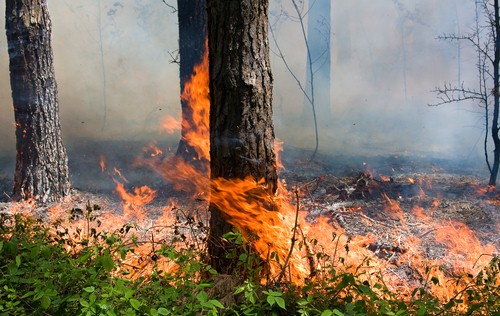Two separate lightning strikes in New Mexico caused small fires, which merged to become the state's largest wildfire on record, burning over 170,000 acres in the Gila National Forest by Thursday. About 1,200 firefighters and 12 helicopters have been battling the blaze since last week, but low humidity and shifting winds have hindered their efforts.
As of Wednesday, the Whitewater-Baldy Complex blaze was still burning at zero containment and fire officials fear it will continue to burn until monsoon season in July. The New York Times reported that 12 homes and eight other structures had been destroyed and only the small communities of Mogollon and Willow Creek had been evacuated. Due to smoke though that could be seen from Sante Fe – over 100 miles away – the state's environment and health departments issued an air quality advisory for the entire state on May 24.
"We’re very concerned," said Gerry Perry, a fire information officer with the United States Forest Service. "The weather is certainly not working to our advantage. We are in the single digits with relative humidity, which really complicates firefighting efforts. If you get a spark that flies forward and lands in vegetation, then you’re going to have spot fires."
On Tuesday, Sen. Jeff Bingaman, D-N.M., announced that the Federal Emergency Management Agency (FEMA) approved New Mexico's request for fire management assistance declaration. Governor Susana Martinez also urged businesses affected by the fire to apply for low-interest Small Business Administration loans that could become available if enough applicants seek the help.
While post-disaster plans can help businesses recover, it is also important for businesses to have business continuity plans in place as well, to keep employees safe and informed during the evacuation process. Companies would benefit from pairing with a disaster preparedness firm to ensure that a plan exists for before, during and after emergency situations.

